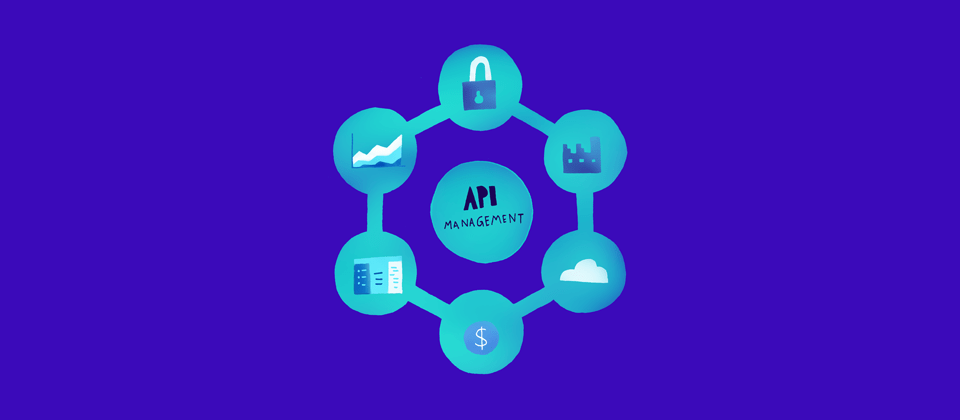Many organizations that already rely on an Integration Platform as a Service (iPaaS) to integrate applications and data remain unconvinced of the necessity of using an API management system concurrently. However, both platforms have distinct capabilities and serve separate purposes. So what is the difference between them?
What the next phase of automation looks like
Download whitepaperAPI Integration (or iPaaS) vs. API Management
Broadly speaking, an iPaaS is a platform that connects any combination of cloud or onsite applications, enabling businesses to bring data from separate applications, systems and warehouses together to create business process workflows.
APIs underpin this process, using API Integration. For example, when exchanging data from your customer relationship management (CRM) and enterprise resource planning (ERP) systems, a modern iPaaS like Workato will expose the APIs of each system, or create APIs.
The value of a modern iPaaS lies in its intelligence, as it constantly improves, recognizes integration patterns, and makes recommendations on a variety of tasks such as field mappings, with zero devops required.
But API creation and API management are two different things. An API management system enables businesses to build, manage, and extend APIs continually and in a secure environment, through unified management, versioning control, and finely-tuned security. Strong API management systems can enable collaboration and faster access to necessary data such as customer information, or order data across the organization at scale with the right access policies.
The million-dollar question: do you need both?
Related: 5 benefits of business process integration
Combining Integration and API Management: the best of both worlds
The short answer is yes. If you don’t manage the APIs you create, you run the risk of data breaches, chronic system malfunctions, and operational inefficiencies. And it can be hard to pinpoint the origins of these issues.
That’s why there is a strong need for a consistent and high-quality data repository that can be shared both across the organization and to external partners, while being managed securely with the right governance framework.
When you take a holistic iPaaS and API management approach, you can build upon the intelligent iPaaS infrastructure by allowing internal and external partners to consume the workflows, services, and data through a cloud-native enterprise-grade API management system, without direct access to underlying apps and systems.
Related: 5 ways to integrate your data
Run business processes with your APIs
With an API platform that’s built right into the iPaaS, you can convert any business process automation into an API endpoint that can be readily consumed by your stakeholders.
The possibilities are now much broader when these APIs are easily reusable by multiple departments or integrated into various forms such as bots and external portals (e.g. partner portals) — widening access to data and services without compromising security.
If you’d like to share services such as analytics data from Salesforce, you can now supercharge that adoption by just building the automation process once, converting that into an API endpoint and exposing the data required for the right stakeholders.
Protect data across your systems with API management
If you offer direct access to systems, chances are high that you’ll expose confidential information. You can share data instead by using API management. It communicates securely with your on-prem and cloud sensitive data, and allows you to also share data in a way that’s fully controlled via endpoints you expose. For example, you can allow users to retrieve orders in a system, but not create them.
Here are a few more ways that API management safeguards your data:
- Since nothing else connects to your systems, you’ll be protected against distributed denial of services attacks
- It allows you to restrict access, set quotas, and use rate limits to protect your sensitive systems
Build an automation workflow once, but use it in several ways
API management also allows you to reuse API microservices. This means that rather than rebuilding a new automation or recipe for each use case, you can just build the workflow once and add it to the API management, which then controls the level of data access.
This helps you drive adoption, maximize your APIs, and it lets you focus on creating new business use cases.
Low code integration development for non-developers too
The benefits of having an iPaaS and API platform in a single environment makes it extremely easy for non-developers such as business analysts, who are already familiar with the business processes, to create and modify APIs for consumption.
That’s a huge benefit in terms of cost savings and time to market because you don’t have to wait months to hire, train and reskill your existing employees to get the solution you desire. The iPaaS takes care of the business logic and process automation while the API platform takes care of the governance, quality control and distribution of it.
Manage and streamline API governance effortlessly
Probably the most underrated of them all, API management within an iPaaS can be a huge timesaver when it comes to organizing APIs, managing policies, setting up access controls, and monitoring usage quotas for internal and external use.
Bringing the two solutions together in a single platform with unified data access makes it easy for your teams to monitor logs and performance metrics and debug quickly if needed.
